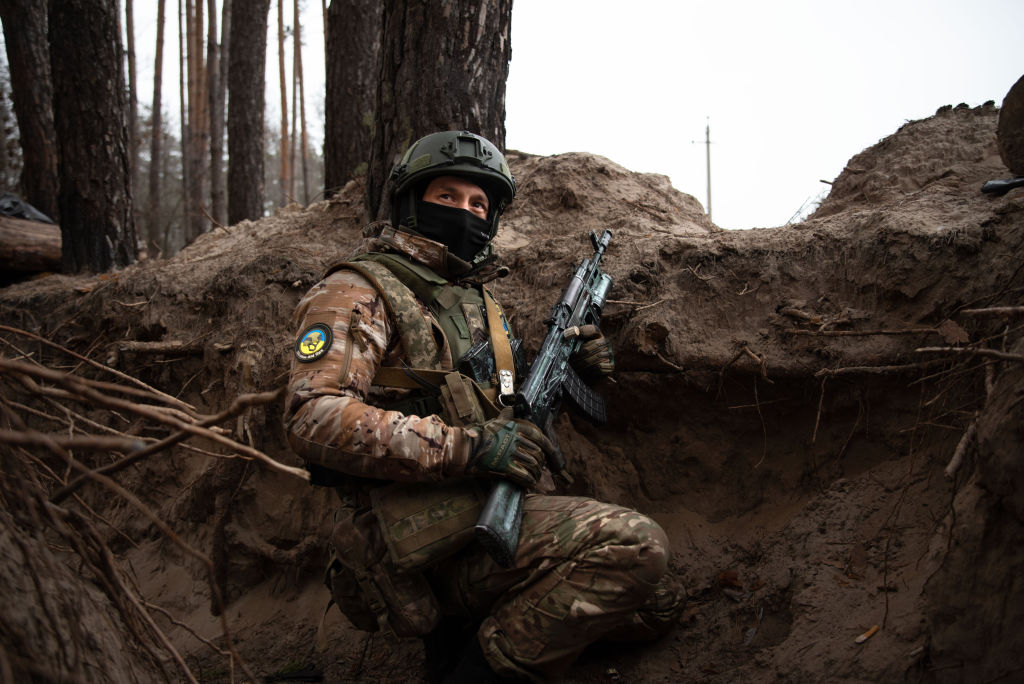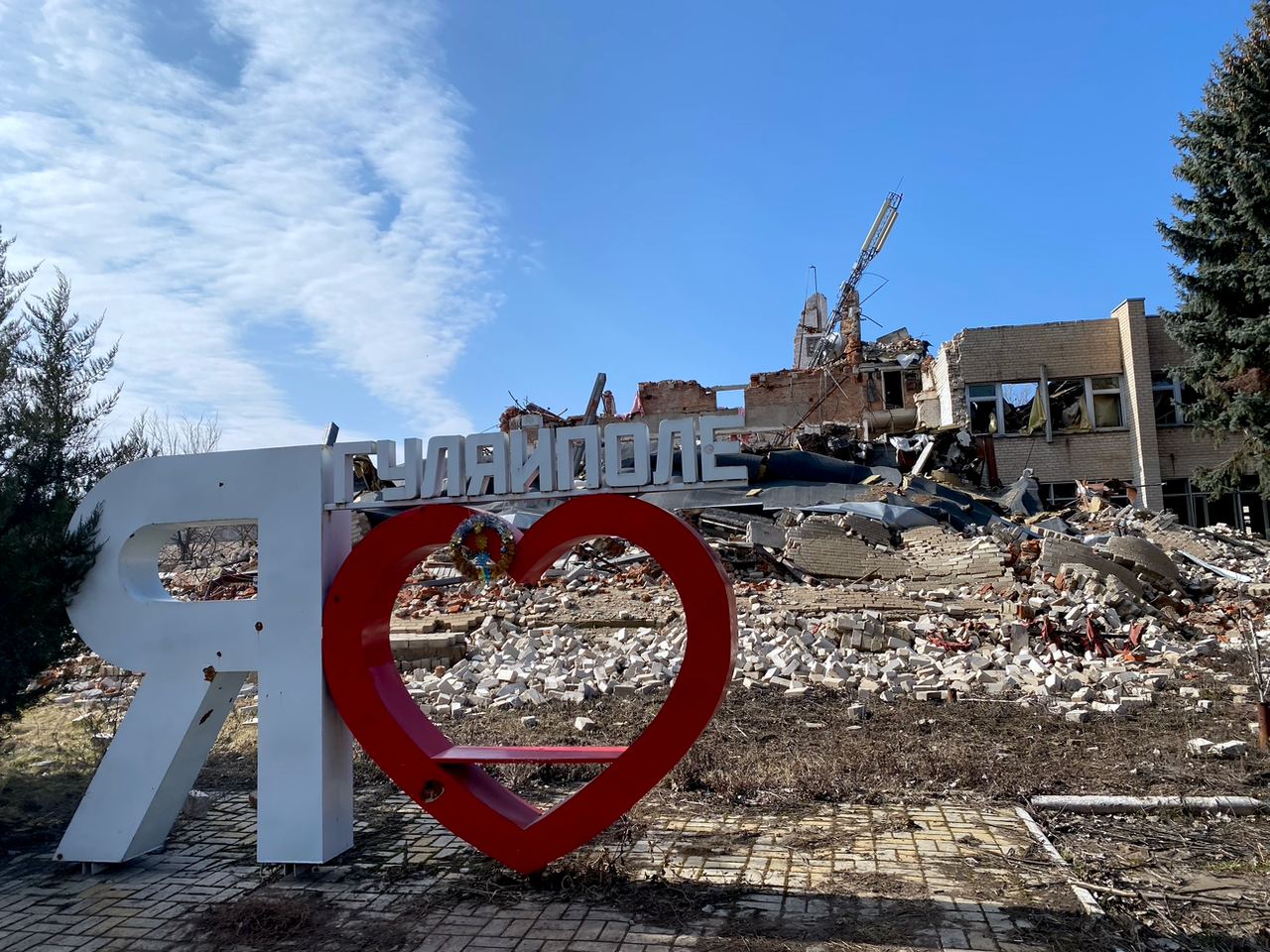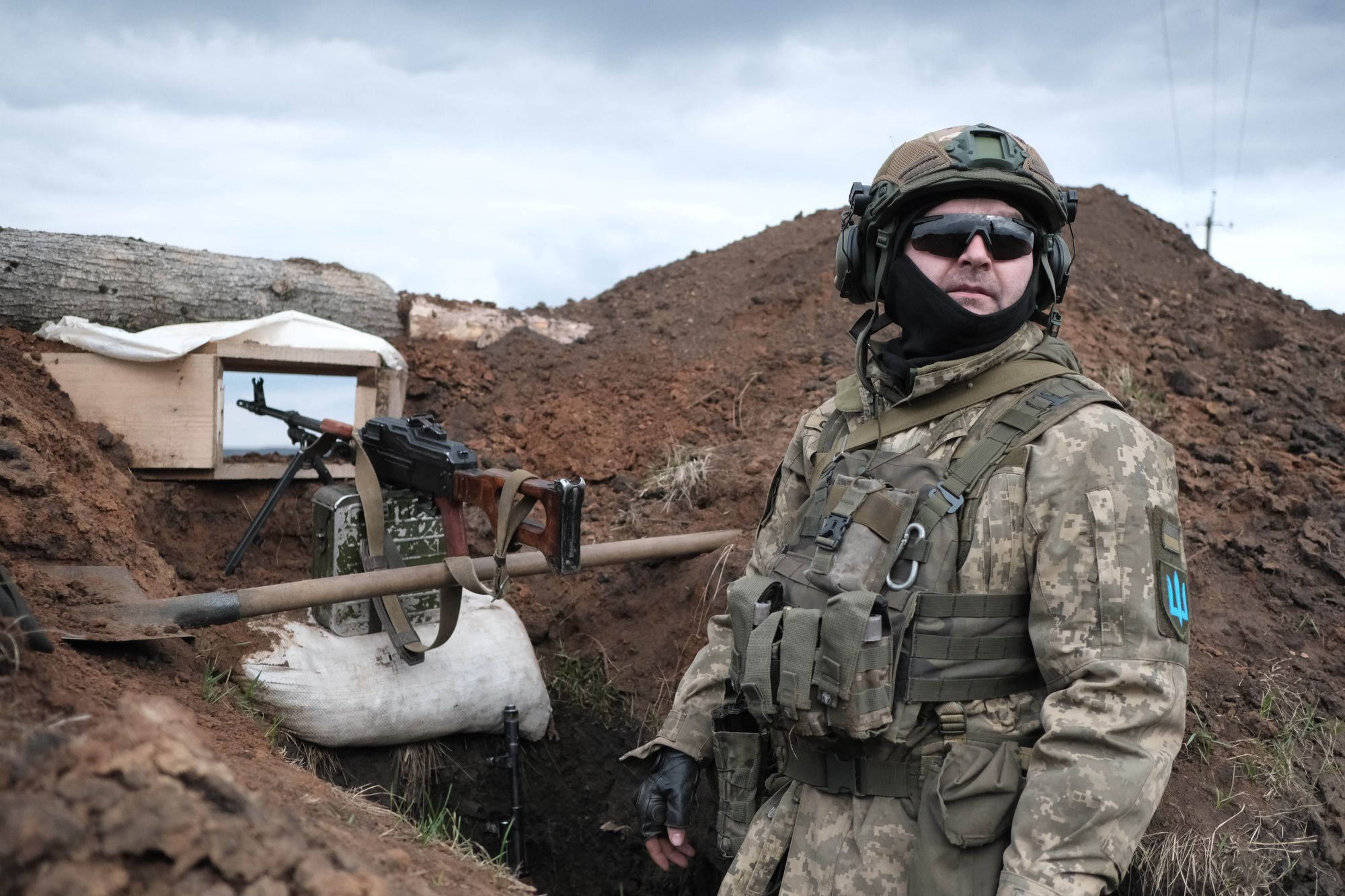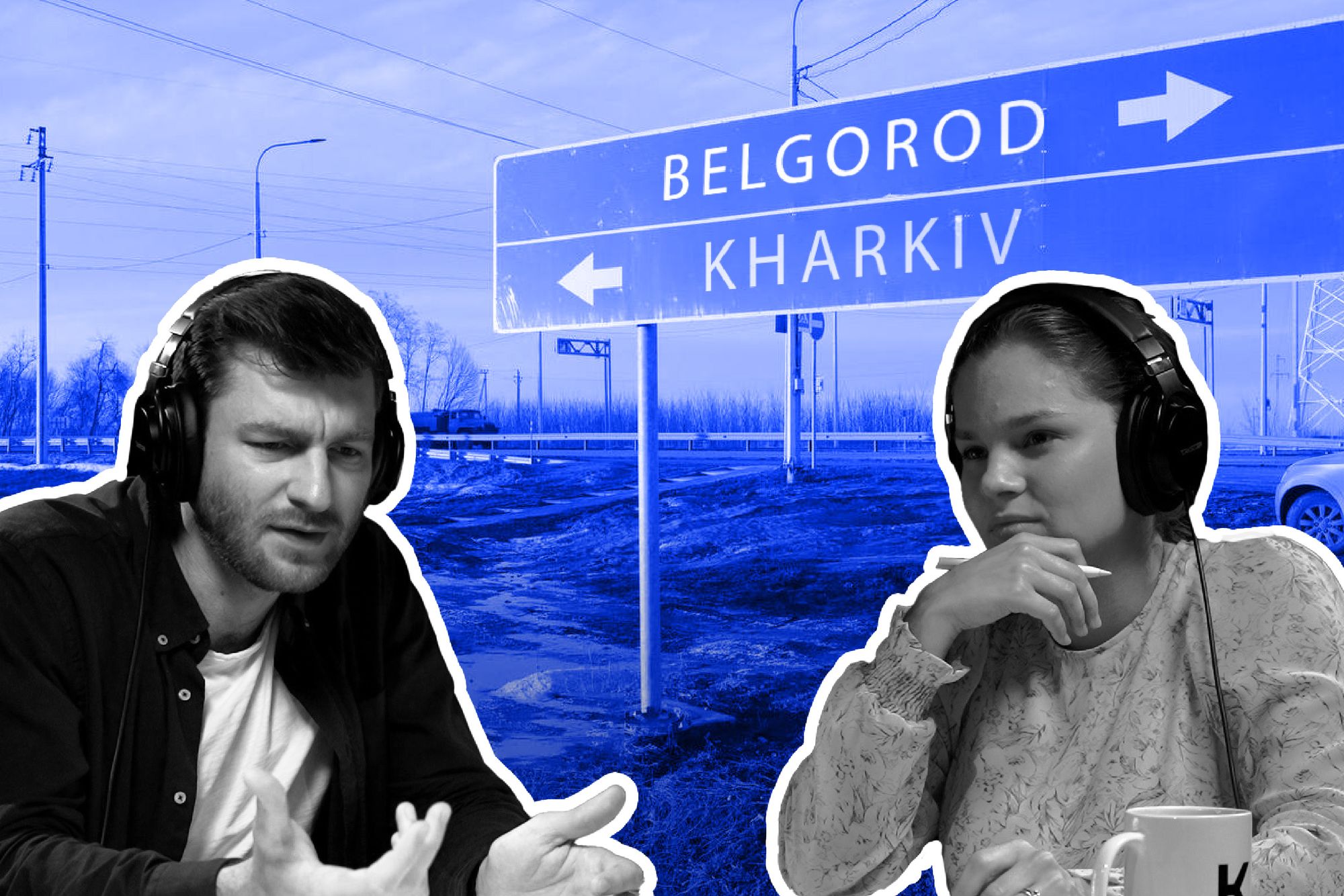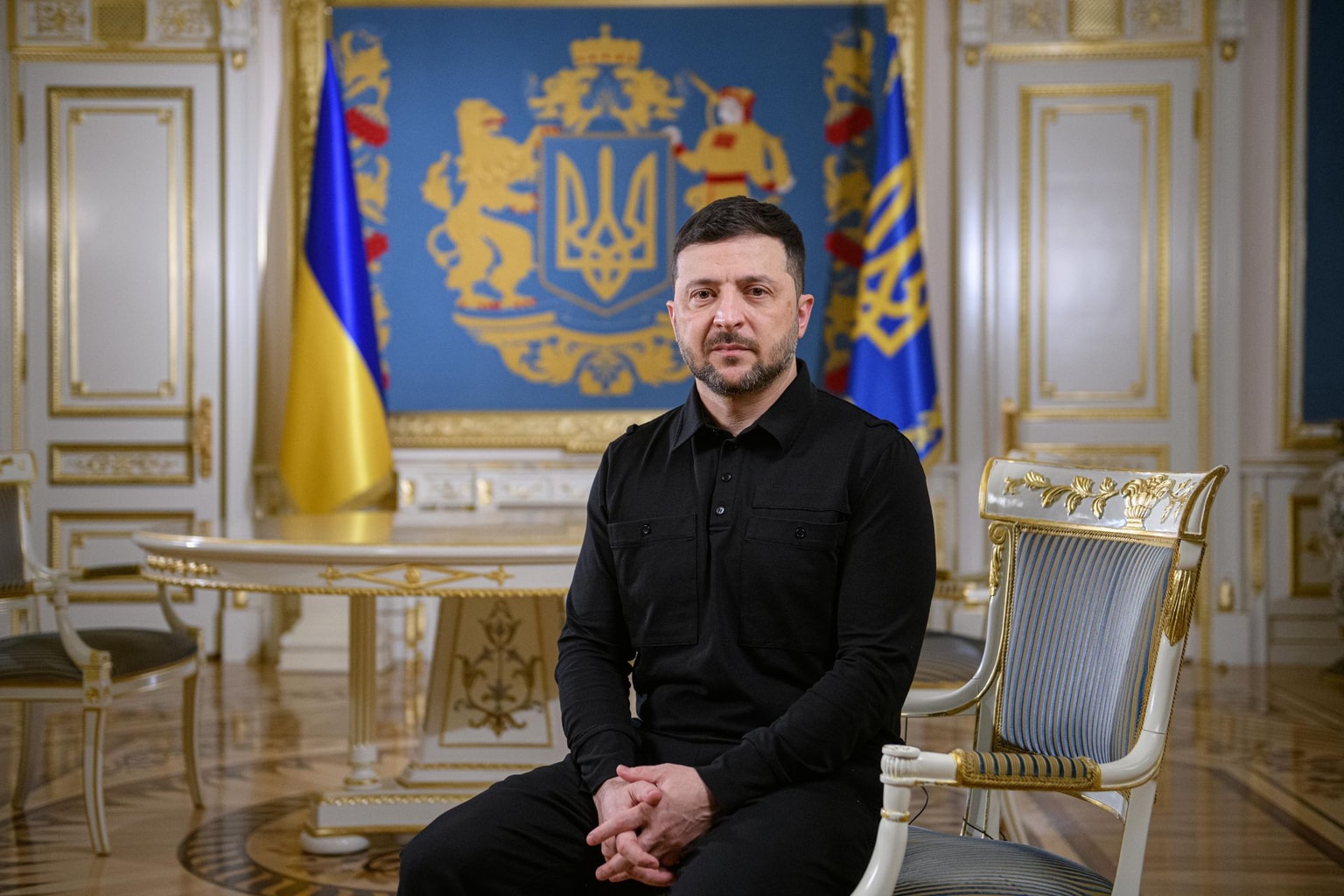On Ukraine’s southern front line, tension reigns before decisive counteroffensive

Editor’s note: As per the regulations of the unit, soldiers interviewed for this article, many of whom have relatives remaining in Russian-occupied territory, are identified by first name and/or callsign only.
SOUTHEASTERN UKRAINE – After months of seeing Russia’s war against Ukraine through the drab gray-brown landscapes of winter, the lush green visuals of zero-line trenches at the onset of summer are a strange sight to adapt to.
Though both incoming and outgoing artillery fire can be heard regularly, new foliage provides valuable cover for soldiers and vehicles.
Beyond the trench’s observation points, no man’s land stretches outwards over the flat Ukrainian steppe towards Russian lines around a kilometer away.
These positions mark the first line of defense on the southern front line, stretching across Zaporizhzhia Oblast into the west of Donetsk Oblast, of Russia’s full-scale war against Ukraine.
It is across the fields of this southern front that many, both in Ukraine and abroad, expect that Ukrainian forces armed with Western tanks and armored vehicles will surge forward at the vanguard of a major counteroffensive in the coming weeks or even days.

Anticipated for over half a year since Ukraine liberated Kherson and the rest of the occupied territory west of the Dnipro River, Kyiv’s next major push looks likely to be decisive for the future course of the war.
In the best-case scenario, Ukrainian forces achieve a major strategic breakthrough in the south, reaching the Azov Sea and cutting off Russia’s “land bridge” to occupied Crimea. Not only would such an attack devastate Russian logistics in southern Ukraine, it would also isolate the Crimean peninsula itself and provide a pathway for the total defeat of Russia in the war.
On the other hand, if Russian lines hold and the counteroffensive fails to make a real breakthrough, such a scenario could signal the beginning of a deeper military stalemate, where neither side is capable of major new offensive operations.
With the beginning of major counteroffensive operations potentially as little as a week away, the Kyiv Independent visited positions manned by the 110th Brigade of Ukraine’s Territorial Defense forces, its ranks filled almost entirely with locals from Zaporizhzhia Oblast who took up arms immediately upon the full-scale invasion.
Strong and stable
From a village house a few kilometers back from the front line, a mortar crew of the 110th Territorial Defense Brigade described the situation as stable.
“They aren't conducting any active operations at the moment,” 36-year-old crewmember Denys, callsign “Jamal,” told the Kyiv Independent. “In winter they were still trying, moving forward in small squads, but there is nothing like that yet.”
Armed with 60mm, 82mm, and 120mm mortar tubes, the 10-man-strong unit is in charge of striking Russian positions at a distance of up to 10 kilometers, supported by drones to help them aim.
The sound of distant explosions is testament to the ongoing artillery skirmishes that continue in the absence of assault attempts.
Since the chaotic first phase of the war when Russian columns stormed into Ukraine from the east, south and north, this southern sector of the front line has been by far the most static.
In comparison to their disastrous attempt to take Kyiv and Kharkiv, Russian forces found success in southern Ukraine, where defenses were spread thin and Russia quickly broke through the strip of land connecting mainland Ukraine to the Crimean peninsula.
The crucial transport hub of Melitopol, now seen as a key prize for a Ukrainian counteroffensive, was entered by Russian forces on the second day of the invasion, and completely occupied by March 1.
Russia’s assault on the south was finally stopped in March 2022 due to a redeployment of troops and fierce resistance around the pockets of Orikhiv, Huliaipole, and nearby Velyka Novoselivka in Donetsk Oblast.
These frontline cities are still under Ukraine’s control, though subject to relentless shelling targeted both at civilians and military garrisoned nearby.
“They stopped because we stopped them,” Jamal said. “They got as far as they could, and now our forward positions are those that we retook from them.”
Since the beginning of the full-scale invasion, Russian troops have occupied almost 60% of the Zaporizhzhia Oblast.
In an attempt to entrench its rule in these areas, Russia conducted sham referendums in September 2022 in the occupied parts of Zaporizhzhia, Kherson, Luhansk and Donetsk oblasts for the territories to join Russia, a move denounced by Ukraine and the international community.
“Bohun,” a 47-year-old battalion commander of the 110th, confirmed that Russian forces had shifted to a more defensive posture in anticipation of a counteroffensive.
“They've been working especially hard in the last month to dig in,” he said. “They are clearly waiting, and they are clearly afraid.”
Drone pilot Sviatoslav, 36, showed the Kyiv Independent recent footage of new Russian trenches dug around villages on their first line of defense. On Sviatoslav’s drone remote, the fresh gashes in the earth are clearly visible weaving in front of and in-between houses, in a settlement where, according to him, as little as 60 people remain from a pre-war population of 2,000.

“Of course they are worried,” he said of Russian troops. “We had someone head across the field to us to surrender recently. Even officers are surrendering.”
As worried as Russian forces may be, breaking through will prove a massive challenge for Ukrainian troops, who will face dozens of kilometers of defensive lines built over a year of the area’s occupation by Russian forces.
The fortifications constructed by Russia are formidable: multiple layers of anti-tank ditches, dragon’s teeth, and sheltered infantry and vehicle positions await Ukrainian forces.
Extra layers of defensive positions surround strategic points and cities such as Tokmak, Melitopol, and Kamianka.
Given enough time to fortify it, the vast open expanse of the Ukrainian steppe in the area is a particularly challenging landscape for a large-scale combined arms offensive.
Russia’s botched attempts to take Vuhledar, a town about 150 kilometers southwest of Bakhmut and 190 kilometers from Zaporizhzhia, exposed the difficulties posed by the flat terrain.
Ukraine's Armed Forces might have destroyed "almost an entire brigade" of Russia's elite 155th naval infantry in the battles over Donetsk Oblast's Vuhledar, Politico reported, citing Ukrainian military official Oleksii Dmytrashkivskyi.
Last preparations
At a training camp in a pine forest a few hours’ drive from the front line, soldiers of the 110th Brigade are going back to basics.
In groups of six, infantrymen are put through their paces with elementary shooting drills, sending two bullets down range at a time in different stances.
An instructor observes carefully, offering feedback on every missed shot, every finger left too long on the trigger. At first glance, these don’t seem like men who have already fought for over a year of state-on-state war.
Simultaneously, a small drone team practices dropping grenades from a Chinese-made Mavic drone, in a new form of warfare that continues to gain popularity on both sides. The set-up is impressively low-tech: a 3D-printed mechanism is attached to the belly of the drone, while the grenade itself is held in a paper cup.
Surprisingly, for most of the soldiers currently at the training ground, this is the first time since the full-scale invasion that they have been rotated off the front line for proper training.
Having rushed to join the local Territorial Defense in the first days, instead of structured basic training, these soldiers were met by a near encirclement by Russian forces in the city of Tokmak.
“We had no trenches, no helmets, no vests, we were given two magazines each while a tank and two infantry fighting vehicles were shooting us up,” said “Grandfather,” a 68-year-old reconnaissance officer from Bohun’s battalion who has served in the army since 2014.
Since the chaotic early days of their formation, Territorial Defense forces now serve as a key component of Ukraine’s military structure, often holding the first line of defense in the areas of some of the heaviest fighting.
Not counting an occasional quick trip home to see family, most of the soldiers in the Zaporizhzhia Territorial Defense brigade have now fought for more than a year without being rotated off the front line.
“Of course everyone is tired, especially mentally,” said 36-year-old infantry Oleksandr from the dark, muddy dugout that he has called home since last summer. “Physically it's not so bad now that it's not cold, but we are really hoping not to spend a third winter here.”
According to documents contained in the April U.S. intelligence leaks, nine brigades currently kept in reserve are those which receive Western armored vehicles and likely lead the counteroffensive.
The push will also likely be supported by the “Offensive Guard” force, of nine more new assault brigades formed under Ukraine’s National Guard, police force, and Border Guard Service.
All over cities like Zaporizhzhia, slick multicolored billboards call upon locals to join the new units, with personalized slogans such as “Channel your anger into arms!”
The brigades that form the Offensive Guard force are "fully formed" and will be placed under the command of Ukraine's Armed Forces after receiving combat missions, Internal Affairs Minister Ihor Klymenko said in an interview on May 2.
Having held the line for so long and boasting a deep familiarity with the area, the 110th Brigade will likely play their own role, if indeed the counteroffensive is launched down south.
“I doubt we will be used as assault troops since most of us are over forty,” said 54-year-old Vitalii in the neighboring trench. “I imagine we will be tasked with clearing liberated areas after the assault forces go through, and the securing of the rear lines behind them.”
This is personal
For many of those in the ranks of the 110th, hypothetical arrows across maps of a potential southern counteroffensive come with more personal meaning than for most Ukrainian soldiers.
Of those men interviewed at the training camp, all were from settlements in Zaporizhzhia Oblast that are currently occupied by Russia, including Enerhodar and Tokmak.
“We just want to go home, we have lost everything,” said 23-year-old Illia, callsign “Tsyhan,” resting in between training sessions at the camp. “I can't say if we will need these specific skills here but when we are face-to-face with the zombies in the trenches opposite, I'm confident we will remember everything.”
Tsyhan’s wife and three-year-old daughter, like most of the families of the soldiers here, were evacuated from their home village.
While some family members fled to safety, others often chose to fight side-by-side, literally. Sending bullets down the range were 52-year-old Vasyl and his son, dressed in a hoodie underneath his bulletproof vest and going by the callsign “Pitbull.”

The pair hail from the village of Kokhane near occupied Tokmak, the name of which translates to “Beloved.”
“I hope that by next month you can visit us at home for some hot chebureki, or that we'll be on the beach in (the port city of) Berdiansk,” said Pitbull.
“After the war these will all be my children,” added Vasyl about those in his unit, putting his arm around his son for a photo.
Some of the men interviewed expressed that their full personal investment in Ukraine’s struggle often puts them at odds with civilians, many of whom live lives not too different from those in peacetime.
“You visit Zaporizhzhia and you see these fit young guys who just sit in bars and act rudely towards us.” said Tsyhan. “I can’t see how I can ever talk to someone like that after the war.”
“You start to feel over there that there is no war, and if there is no war, then what place is there for us?”
The battle for Zaporizhzhia Oblast also has a deeper historical meaning that looms large in the minds of the local brigade.
The “Wild Fields,” the name given to the southeastern Ukrainian steppes, have been the setting of centuries of battles between Zaporizhzhian Cossacks against the Crimean Khanate and later, the Russian Empire.
In Bohun’s battalion, itself named after 20th century Ukrainian anarchist revolutionary Nestor Makhno who was born in nearby Huliaipole, many soldiers come from local Cossack organizations, or have joined them since starting their service.
One of the most colorful examples of this continuity is Grandfather, who claims to be descended from the actual Zaporizhzhian Cossacks.

“I am a native Cossack, I was brought up in this since childhood,” he said. “My grandfather used to say that the steppe and freedom are the Cossack soul.”
“We used to hold events together with Don Cossacks (from southern Russia) before 2014, and you could just feel their sense of superiority,” he added. “But already we were telling them that this was our land, that nobody would be giving commands to us.”
Grandfather grew up near the town of Polohy, also occupied by Russia, and also a key settlement along the route of a potential southern counteroffensive.
“It's been a year and a half since I could visit the grave of my parents, it's probably all overgrown by now,” he said. “When we liberate the area, I will pay a visit... and then continue onwards.”
Waiting game
At the mortar base near the front line, the arrival of heavy afternoon rain scuppered plans for a firing mission. With the arrival of dawn the next morning, the weather improved, but still, the order was given not to go out to work, as the commandment wanted to avoid exposing Ukrainian firing positions just yet.
Whether it’s soldiers on the front lines, the Ukrainian people, or observers across the world, the awaited large-scale counteroffensive has stirred up feelings of intense anticipation unprecedented in the war so far.
Soldiers share rumors about when it might begin, about what new brigades have arrived nearby, but the accepted reality is that only a handful of people at the top of Ukraine’s leadership know the plan, and that plan could still change.
“Of course, I'm waiting, I'm waiting for the General Staff to let me know everything,” Bohun said with a smirk.


It is impossible to reliably predict in advance what will happen once the push begins. The type of large-scale offensive needed for a breakthrough in the context of a brutal state-on-state war like this has no close equivalent, not in this war nor in any other.
Ukraine has much going for it: Months of preparation, superior-quality tanks and armored vehicles, Western jamming and mine-clearing equipment, and the precision-strike capabilities of HIMARS and M270 systems will all be crucial for success in attack. Ukraine will also look to make best use of Western intelligence assistance, and is understood to have saved up plenty of artillery ammunition for the offensive.
Russia has also made use of the time given to prepare, and the multiple lines of minefields, dragon’s teeth, anti-vehicle ditches, and trenches, are specifically designed to bog down an initial attack, even if successful, and prevent it from turning into a strategic breakthrough.
Though the fortifications will be a challenge to overcome, Sviatoslav hopes that the Russian soldiers assigned to man them will offer less resistance.
“If we hit them hard, I believe they will break and flee,” he said. “It's not a good feeling when your neighboring trench has just been lit up and you know that you're next; the will to fight leaves you pretty quickly.”
So far, Ukrainian officials have been eager to play down expectations of the counteroffensive being a single, decisive battle.
Ukraine’s operation has been “underway” for several days, presidential advisor Mykhailo Podoliak said on May 25.
“The counteroffensive has been ongoing for several days now, and there is an intense war along the 1,500-kilometer border, but actions have already begun,” Podoliak said.
While no major armored push has been observed yet, what look like deliberate shaping operations to weaken Russia’s defense have taken place throughout the month of May, and not only in the south.
As the brutal battle for Bakhmut in Donetsk Oblast looked to be drawing to a close, Ukrainian forces conducted successful localized counterattacks on the flanks of the city, taking advantage of the conflict between the Russian military and Wagner group head Yevgeny Prigozhin and forcing Moscow to allocate more troops to what it thought was a completed victory.
Over the last weeks of May, an increasing number of explosions were reported in occupied areas in southern Ukraine, such as Mariupol and Berdiansk. The damage caused and distance from the front point to the likelihood of Ukrainian forces’ use of new long-range Storm Shadow cruise missiles acquired from the U.K.
Meanwhile, several raids into Russian territory have been carried out by two anti-regime Russian military formations, almost certainly in direct coordination with Kyiv, as recently as June 1. Moscow’s failure to defend its state border is widely seen as a major political embarrassment, and could force the transfer of units from the front line in occupied Ukraine.

Although some representatives of the Ukrainian leadership have asserted that this is not Kyiv’s last chance to liberate its occupied territories, the high stakes of the operation is not lost on many of them.
Without giving a date for the beginning, National Security and Defense Council Secretary Oleksiy Danilov said on May 27 that Ukraine had "no right to make a mistake" on the decision because this was a "historic opportunity" that "we cannot lose."
A minute-long video featuring Ukrainian troops marching, training, and preparing for battle was released by Commander-in-chief Valerii Zaluzhnyi on May 27, with an ominous message hinting at an imminent counteroffensive.
“The time has come to take back what is ours,” Zaluzhnyi wrote.
Battalion commander Bohun shared this vision of a holy crusade to return their beloved steppes from occupation.
“(This fight) is our holy duty,” Bohun said.
Note from the author:
Hi, this is Francis Farrell, one of the authors who wrote this piece from on the ground on the southern front line of Russia's war against Ukraine. At the Kyiv Independent and all over Ukraine, we are all waiting for this counteroffensive to start, and even if we have to wait and wait, we understand why success is crucial for Ukraine's future. Whatever the outcome though, we are not going anywhere. Please consider supporting our reporting.



